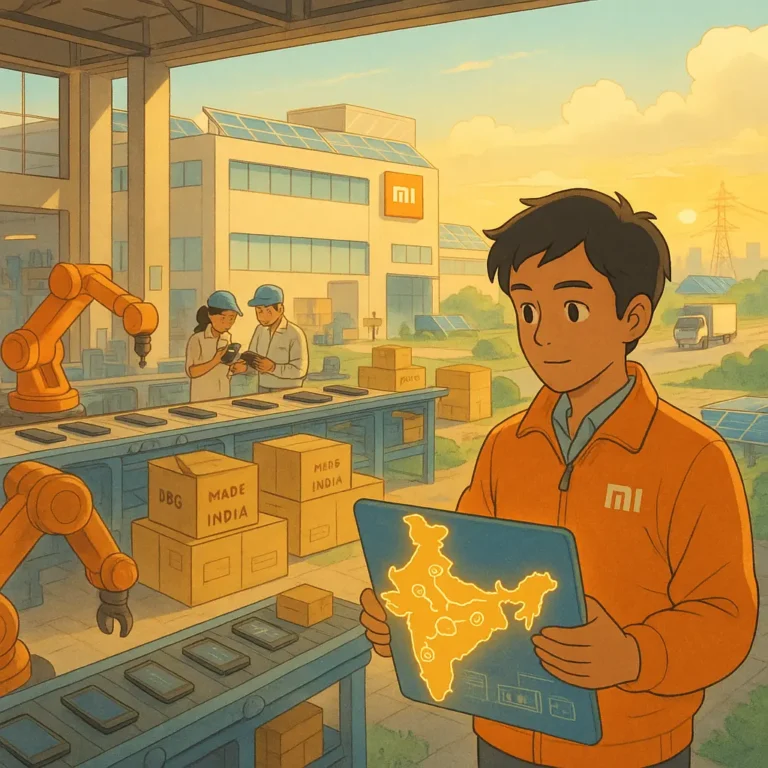
Although transparency was not initially a part of supply chain management in Africa, it is now increasingly demanded by consumers and other relevant stakeholders, which puts your businesses in a unique situation.
To be fair, no supply chain anywhere is designed to be transparent, but it especially the case in Africa.
With sustainability being a popular issue in today’s market, businesses must open their supply chain process to the public.
Now, there are some reservations which we will explore later in this article, but first, we will define supply chain transparency.
What is Supply Chain Transparency in Africa?
Supply chain transparency is the ability to know in real-time everything that is going on within your supply chain and then communicate that to the relevant stakeholders.
Communication in this context entails full-scale communication, including facts, figures, the why, the expected outcome, and the actual outcome.
Although supply chain transparency impacts every area of the supply chain, it is common in areas such as quality, sustainability, resilience, and risk management.
In a world where customers are increasingly in charge, supply chain transparency has become more in demand.
A few years ago, it was considered a competitive edge, but today, it is becoming quite common or a must-have.
What is the difference between Supply Chain Transparency and Supply Chain Visibility in Africa?
On the surface, supply chain transparency and visibility sound similar but quite different.
Supply chain visibility is the ability to track and monitor every activity in your supply chain in real-time; however, the management and other internal players mostly understand it.
On the other hand, supply chain transparency is the ability to track and communicate relevant data on the supply chain to interested parties, including customers, government, and owners.
The main difference between the two is that while supply chain visibility aids the management in making decisions that impact the supply chain positively, supply chain transparency aids the management in communicating the state of the supply chain to all relevant stakeholders.
Supply chain transparency is made possible through successfully implementing supply chain visibility.
What are the challenges of Supply Chain Transparency in Africa?
Although supply chain transparency is essential in today’s business climate and competitive nature, in Africa, it is still difficult for supply chains to achieve this.
For starters, it is because supply chains on the continent were not designed to be transparent. Here are some of the challenges for supply chain transparency.
The Complexity of Supply Chains
Supply chains in Africa are mostly informal. This can make them incredibly complex, especially those with international reach, because they span multiple countries and involve numerous suppliers.
For smaller supply chains, they may have to deal with poor infrastructures. All in all, these factors make it challenging to trace the source of every component.
Data Collection and Integration
Gathering and integrating data from various sources into a coherent system can be difficult.
Supply chains in Africa are facing this challenge at a high value, mostly because of little to no investment in that area. Without proper data, transparency efforts will be nigh impossible.
Supplier Reluctance
In many cases, suppliers may be unwilling to disclose information about their practices, especially if they have something to hide or if it’s a competitive advantage.
Lack of Standardization
There is no one-size-fits-all approach to supply chain transparency.
Because there is no universal supply chain transparency standard, comparing efforts across industries and regions is challenging.
Resistance to Change
If they perceive transparency initiatives as cumbersome or disruptive, some stakeholders within your supply chain will likely resist the effort, which puts you in a bind.
What are the Benefits of Supply Chain Transparency in Africa?
Although there are challenges to supply chain transparency, many are quite understandable. The fact remains that the benefits far outweigh the concerns.
Here are some of the benefits of supply chain transparency
Accountability
Transparency encourages companies and their supply chains to accept responsibility for their actions, especially ethical and environmentally impactful ones.
It makes them responsible for any potential problems, forcing them to make better decisions.
Enhancing Sustainability
By identifying environmental and social risks in the supply chain, transparency enables companies to choose more sustainably, reduce waste, and lessen their carbon impact.
Consumer Trust
Consumers are likely to pay 2 to 10% more if they are sure their products are sustainably produced.
Consumers who value knowing where and how their products are made place a greater importance on transparency.
Increased consumer loyalty and brand reputation can result from this trust.
Risk Reduction
Businesses can actively reduce risks by early detection of potential issues in the supply chain. This lessens the possibility of expensive disruptions.
How to Achieve Supply Chain Transparency in Africa
Supply chain transparency in Africa can be difficult to achieve. The challenges listed earlier are pretty difficult to get by, but the strategies listed here will give you a way out.
1. Visibility
The ultimate gateway to transparency is through supply chain visibility. It is the stepping stone to achieving transparency in your supply chain.
This means the same infrastructures guaranteeing visibility are largely responsible for transparency. There are a few major differences, but one is communicating collected data to relevant parties.
To achieve visibility and transparency, accurate and informed data must be collected.
One wrong data can paint a completely different picture for the supply chain and could cost them a lot of lost revenue.
When working to achieve visibility, ensure information is properly vetted and communicated as is, whether good or bad.
In many cases, we have had businesses try to hide bad information, which only caused a greater problem than would have been possible initially.
2. Auditing your Supply Chain Process
“If the mountain will not come to Mohammed, Mohammed will go to the mountain”.
It is a popular saying in Africa, but the meaning in this context is if you cannot achieve supply chain visibility, you can certainly audit your supply chain periodically to achieve transparency.
It is challenging, especially for complicated supply chains, but it can be very rewarding if done right.
Supply chain auditing entails reviewing data from different parts of the supply chain and its stakeholders to verify its authenticity.
During the audit, you must visit and verify information about the supply chain, wherever these parts may lead.
The process ensures businesses and their suppliers aren’t just presenting information they think the public wants to hear. Finally, it helps standardize the process by making the main supply chain and all its parts score the same.
For instance, Apple has operations in India and China. The supply chain audit will ensure that Apple’s transparency score in the United States mirrors those in these countries.
3. Supply Chain Mapping
Blind spots in the supply chain encourage bad behaviour from internal and external stakeholders operating in the supply chain.
When these bad decisions are discovered, the problem is not isolated but impacts the entire supply chain process and the business’s reputation.
Mapping your supply chain is the visual representation of your supply chain on a document, which means you can see every inch of your supply chain on paper. These include external players like your suppliers and their operational practices.
By doing this, you immediately gain a 360 view of your supply chain, which allows you to pinpoint any wrongdoing easily. You can get ahead before it becomes a bigger problem for your supply chain.
4. Supplier Scoring
With this strategy, you can create KPIs and metrics relevant to transparency and your goals in that area for your supplier, then you score them based on their performance.
You may use tools like supply chain software to set rules and score your suppliers. This method gives you an overview of your supplier behaviour and how you can get them to align with your goals.
It also helps you identify suppliers who do not necessarily align with your overall supply chain goals, allowing you to eliminate them if they fail to comply.
What are the Elements of Supply Chain Transparency in Africa?
These are the factors that impact supply chain transparency. They include:
- Investment in Technology
- Government Policies
- Nature of the Industry
- Consumer preference
- Company policy and brand image
FAQs for Supply Chain Transparency in Africa
Q1: How can customers confirm the veracity of statements about transparent supply chains?
Consumers can validate claims by looking for third-party certifications, reading reports from independent auditors, and studying a company’s reputation and prior actions.
Q2: How does technology contribute to supply chain transparency?
Real-time data, traceability, and visibility into supply chain activities are made possible by technology, including blockchain, IoT, and supply chain management software.
Q3: How can companies in the supply chain strike a balance between being transparent and safeguarding sensitive data?
Businesses can balance transparency and data protection by disseminating pertinent, non-sensitive information while safeguarding confidential supplier information using secure systems and regulated access.
Conclusion
Supply chain transparency is a great way to ensure businesses tailor their supply chain, which usually takes up a major chunk of their operations.
To ensure this, companies may use any of the strategies highlighted in this article.

Obinabo Tochukwu Tabansi is a supply chain digital writer (Content writer & Ghostwriter) helping professionals and business owners across Africa learn from real-world supply chain wins and setbacks and apply proven strategies to their own operations. He also crafts social content for logistics and supply chain companies, turning their solutions and insights into engaging posts that drive visibility and trust.







